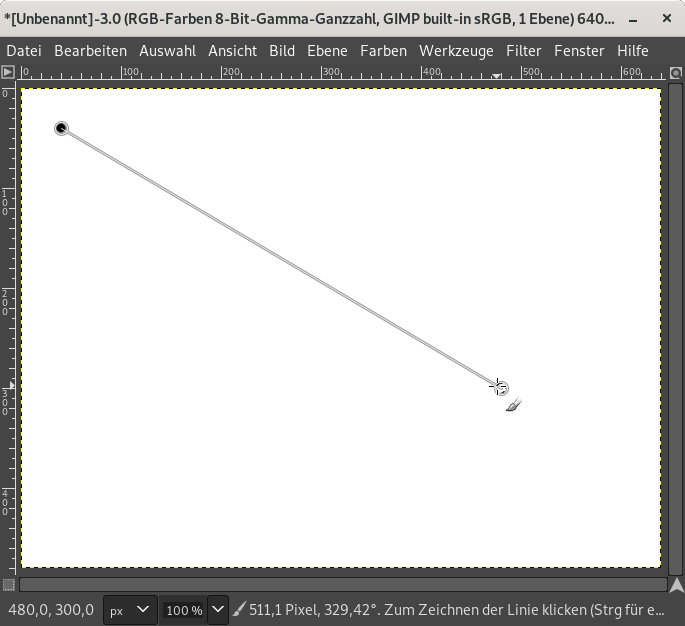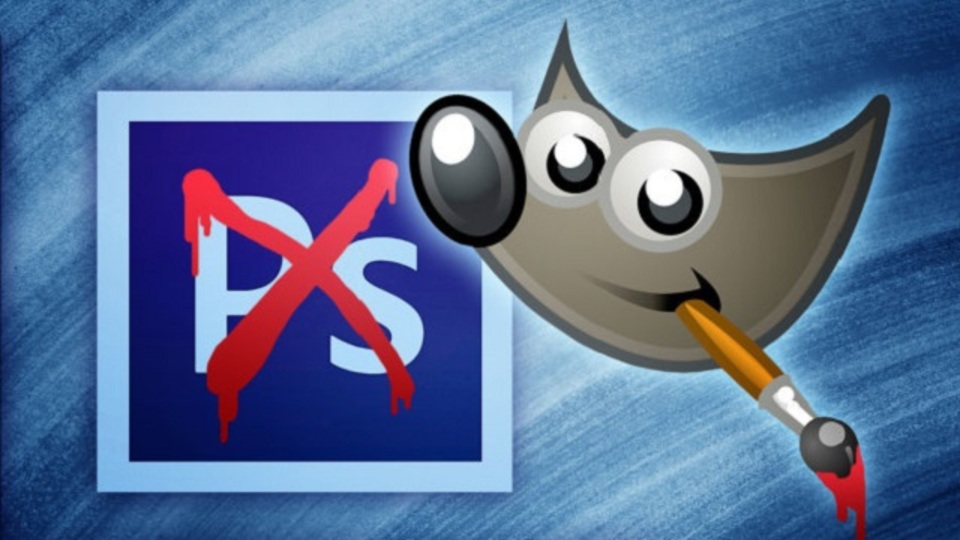
But when you’re using an autofill technique like either of the line drawing options I mentioned earlier, there is one key setting that can have a huge impact on your line: Spacing. GIMP’s brush settings are wonderfully thorough, allowing you to create a huge range of different effects. Last but definitely not least, you can also create and save multiple paths within your image, and switch between them using the Paths panel, which is located in a tabbed array next to the Layers panel in the bottom right corner of the GIMP interface. Move them around, rotate them, and then you can use them again.

The paths you create can also be used again and again, letting you create exact copies of a line with different colors or brush properties.
#Gimp line tool series#
The biggest advantage to using the Paths tool is that you can adjust the points along the path before you actually commit to drawing anything, which can be very useful for planning out a series of strokes. Select the tool you want to use from the dropdown list, and the Stroke with a paint tool feature will use the current settings for that tool. Selecting the Stroke with a paint tool option gives you a lot more flexibility, although it doesn’t always create perfectly crisp lines the way the Stroke line option does. This lets you set how the ends of lines appear, how GIMP should draw corners, and optionally choose to create a dashed line from a range of presets or customize your own. If you choose Stroke line, you can set the Line width as well as a whole slew of other options by expanding the Line Style section. You can tell GIMP to use the Stroke line function the way it does by default, or you can tell it to Stroke with a paint tool which gives you all the capabilities of the quick ‘Shift key’ method I described earlier in the post. Step 1: Select the Paths tool from the toolbox or press the keyboard shortcut B.Īt this point, you’ve obviously got few options. Despite what you might expect from other programs, the Paths tool doesn’t let you draw vector shapes, exactly, but you can use the paths it creates to draw a series of connected lines all at once. If you want a bit more control over your final result, you can use the Paths tool to plan out your line in advance. This isn’t as precise as the more advanced Paths method explained below, but it’s fast and easy, which makes it very handy for smaller adjustments where pixel-perfect precision doesn’t matter. You can keep going from point to point, creating as many as you want, as long as you keep holding down the Shift key.
:max_bytes(150000):strip_icc()/003-gimp-rotate-tool-1701661-7add44eaf60745b1a90923581a9f6e3d.jpg)
GIMP will automatically fill the space between the two points in a perfectly straight line using your chosen brush settings. Step 2: Hold down the Shift key and click again to set the second point of your line. Step 1: Select and customize your brush, then click once on your image to set the first point on your straight line There’s a simple trick to drawing perfectly straight lines with your brushes: the Shift key.

The Quick Guide to Drawing Straight Lines in GIMP Most of GIMP’s drawing tools are brush-based and share the same basic settings and options, so this little tutorial can be used with any tool from the Paintbrush to the Clone tool.

GIMP is a great tool for creating digital artwork, but it’s always a good idea to learn the basics before you start working on your masterpiece.


 0 kommentar(er)
0 kommentar(er)
